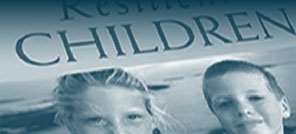We are very happy that you like sharing articles from the site. To send more articles to your friends please copy and paste the page address into a separate email.Thank You.
Printer-Friendly Version | Email Article
This past December both the magazine Sports Illustrated and the newspaper USA Today published major stories about hazing incidents in our schools and colleges, especially among athletes. Accounts of student athletes being subjected to harmful and degrading acts as part of an initiation to become members of a team were highlighted. Lest we think hazing is a problem confined to boys, both articles reported the flagrant abuse that transpired at a “powder puff” football game between junior and senior girls at a suburban high school outside Chicago. The event, caught on video and aired repeatedly on television newscasts, showed seniors kicking and punching their junior counterparts as well as smearing them with a mixture of house paint, fish guts, and human feces. Several of the juniors required hospital care for their physical injuries (one can only imagine the extent of their emotional injuries).
Hazing is not a new practice, although some researchers believe it is on the rise. It has been occurring on athletic teams and in fraternities for years. There are those who view its purpose as a harmless rite of passage. Perhaps for many that may be its intent, but all-too-often the actions that fall under the umbrella of hazing are anything but harmless. In a well-publicized case on Long Island in New York, a junior and a senior football player sodomized several jayvee players at a football camp with broomsticks, pine cones, and golf balls. The coaches were in a different cabin and reported that they were unaware of these events. The reason the acts were discovered was that one boy experienced ongoing intense pain as well as rectal bleeding that soiled his sheets and underwear. He asked his mother to take him to the doctor. When the latter asked what had caused these injuries, initially the boy was hesitant to respond but finally revealed what had occurred. Obviously many acts of hazing are not reported because of embarrassment and/or fear of retribution (one learns that “tattling” is strictly forbidden).
The Sports Illustrated article noted hazing “is firmly entrenched in an American sports culture that values tradition, team bonding, leadership hierarchies and assertiveness.” Hank Nuwer, an assistant professor at Franklin College in Indiana who has authored four books about hazing, commented that the formal definition of hazing includes a wide array of behaviors. Hazing is seen as “any activity expected of someone joining a group that humiliates, degrades, abuses or endangers, regardless of that person’s willingness to participate.” Nuwer observed in the Sports Illustrated piece, “It’s almost like we need different terms, like we have with manslaughter and murder. Having someone put on silly clothes is called hazing, and so is sodomy.”
The problem of definition was noted by Norman Pollard, director of counseling/student development at Alfred University in New York. Pollard and his colleagues undertook a comprehensive, nation-wide study of hazing following such incidents at Alfred. In this study approximately 10,000 athletes at 224 colleges were asked about their high school experiences. One intriguing finding was that while only 12% said they had been hazed, 80% said that had been forced to engage in dangerous or humiliating activities. “They thought it was something else,” Pollard noted. “It was across the board, urban, rural, by sport.”
USA Today reported a similar phenomenon when conducting interviews with five high school students. The selected students had participated in a “Respect and Protect” campaign that has as a primary goal the limiting of student violence. Thus, they were assumed to be sensitive to issues of harassment. Four of the five students said they were not aware of hazing occurring among their peers; yet, as they described clubs, teams, and groups to which they belonged, instances of hazing were very evident. It is interesting that the students did not identify these events as hazing and, if anything, they minimized their impact or offered excuses for their presence.
For instance, a sophomore boy endured the following freshman initiation as a football player: “They tied me to a chair and shaved my head and eyebrows. I saw it all as fun. We didn’t necessarily see it as violence. It was like bonding. No matter what, everybody had it done to them.” A junior girl observed, “I had to do some things—give up my lunch money or do their homework. It’s something you see every day. It’s something you basically have to get over.”
As I read these accounts I questioned whether these students had, in fact, “gotten over” these experiences. To say “everybody had it done to them” or “it’s something you basically have to get over” doesn’t suggest that the hazing is viewed as harmless or as easily forgotten. The Alfred University study found that a number of the students who had been hazed in high school “talked about being depressed and suicidal. Thirteen percent said they thought about revenge.” Although in terms of its definition hazing differs from bullying in that hazing is typically part of a process to join a group, while bullying is used to exclude someone from a group, just as being bullied can generate pain for untold years so too can being hazed.
Ellen deLara, a Syracuse University assistant professor of social work, interviewed approximately 1,000 victims of hazing as part of research for a book she co-authored, And Words Can Hurt Forever. She noted in the USA Today article that the emotional consequences of the abuse can last a lifetime. “Just like someone who has been in a war, there can be heightened sensitivities, nightmares, flashbacks. They are carrying around an extreme amount of rage, and that plays out in their relationships. They get triggered by things that seem the slightest bit disrespectful.” DeLara reported that the most frequent comment from hazing victims was that “parents don’t really have a clue” that hazing is occurring.
The psychological pain and humiliation associated with hazing is not an easy topic for many youth to discuss. Not only have they been the targets of hazing, but in many instances they later engaged in hazing others. I believe that men especially have difficulty sharing their negative feelings related to hazing, conditioned by what my colleague and friend Dr. William Pollack in his bestselling book Real Boys refers to as the “Boy Code,” a code that proscribes the expression of certain emotions as not within the acceptable behavior of “real” boys or “real” men.
I can understand Nuwer questioning the existing definition of hazing as being overly inclusive so as to encompass both “having to put on silly clothes” and “sodomy.” I would never equate having to put on silly clothes with being sodomized. However, I believe both represent incidents of hazing, obviously of different degrees and with different impacts on the abusers and those being abused. While putting on silly clothes may seem benign, if the action “humiliates or degrades,” is it really benign? Must one be humiliated to become part of a group? Does being humiliated render one a better group member? Does it contribute to trust and respect among the group? Must one humiliate others to remain in good standing in that group? While there may be different degrees of humiliation and some actions may have more damaging consequences than others, does that excuse the so-called “benign” hazing behaviors? I would argue that even a “small amount” of humiliation and degradation crosses the boundaries of acceptable behavior and deserves the attention and intervention of parents and other adults. What may seem like a small amount to the observer may not seem so small to the child or adolescent who is the recipient of the hazing.
What can be done to address the issue of hazing? I think that accounts in national publications such as Sports Illustrated and USA Today are helpful in bringing the significance and scope of this problem to the attention of a large audience. I also believe that the studies conducted by the researchers and clinicians cited above facilitate our understanding of the extent and seriousness of this problem. This awareness has led experts in the field to offer a number of recommendations. I should like to highlight several with an inclusion of my own observations.
1. Although incidents of hazing occur outside the home, I believe that parents must assume a primary role in confronting this problem. It may seem obvious, but long before a youngster enrolls at a high school or college, parents must teach that engaging in behaviors that humiliate or degrade are unacceptable. This message should begin even prior to a child entering kindergarten. I have heard accounts of “nice kids” hazing others. We are all aware, as was vividly captured in William Golding’s classic novel Lord of the Flies, that in a group setting without adult supervision even so-called “nice kids” may participate in questionable, hurtful activities that would not emerge outside the confines of the group. Given the dynamics of a group, it is essential that parents prepare their children to resist peer pressure and to follow guidelines that respect others.
2. As the research indicates, it is not easy for kids to discuss their hazing experiences with their parents. The reasons vary. Some feel embarrassed and ashamed. Others don’t want to distress their parents, believing that there is little that their parents can do. Some are concerned that their parents will immediately want to call the school and/or the parents of the perpetrators and that this will result in even more teasing and harassment. Still others have a strained relationship with their parents characterized by anger and an absence of discussion about any topic.
While kids, especially adolescents, may appear to push us away, I believe that parents must create an atmosphere at home in which their children are able to approach them concerning incidents of hazing. This task is made easier in the context of a supportive parent-child relationship in which nonjudgmental, nonaccusatory communication has taken place for years. If, as I recommend in the first point above, parents have created the foundation for discussions about respect for oneself and others, children will be more likely to discuss hazing they have experienced or witnessed or are being pressured to do to others. While peer pressure can be intense, it has been my experience that children and adolescents welcome the input and involvement of caring, concerned parents.
3. Just as children and adolescents do not want to feel alone, it is equally important for parents to create networks of communication and support with other parents. In my workshops parents have often expressed surprise to learn that other parents are experiencing questions and worries similar to their own. Parents should keep in touch with each other both formally and informally. Such interaction not only provides support for parents but very importantly is an effective means of supervising the activities of their teenagers.
4. Parents must also collaborate actively with school personnel, including school administrators, teachers, and, of course, coaches to develop policies against hazing. Students should be involved in helping to develop, maintain, and modify these policies. I believe that at least one school assembly each year should be devoted to a discussion of hazing and bullying. A mechanism for reporting hazing to school officials should be clearly defined. The consequences of engaging in such behaviors should be reviewed with students. In addition to a review of policies and procedures, it is also important to examine with students the psychological and emotional consequences of humiliation and intimidation. Policies prohibiting any form of hazing must be clear to all members of the school and home community.
Since hazing is prominent within the context of athletics, I think it is imperative that coaches present a clear message to their student athletes that hazing is not to be permitted. Coaches should make certain that students understand the school’s policy about hazing and the consequences that would ensue if hazing took place.
5. During a discussion I had about hazing someone raised the question about the importance of providing experiences for members of a team or group to come together. Not only do I believe that particular activities can contribute to the cohesion of a group, I strongly advocate that they be established as regular routines of initiation. However, these activities should never include acts of humiliation and physical harm. Rather, they could involve age-appropriate activities in which the group helps others such as clearing a playground of debris, building a house through the auspices of Habitat for Humanity, teaching younger children sports skills, or helping to raise money for a selected charity.
I believe that such acts of giving serve to bring a group together. The “helper’s high” associated with benefiting the lives of others is enhanced in the context of a group experience. As I have conveyed on numerous occasions in my writings and workshops, engaging in these “contributory activities” nurtures one’s sense of compassion, caring, dignity, and accomplishment. I would prefer that new members join a group within an atmosphere filled with these positive emotions rather than emotions associated with humiliation and fear. As parents, educators, and other professionals, we have the responsibility of ensuring that no child or adolescent is subjected to hazing or its counterpart, bullying. It is a responsibility that deserves our full attention.



